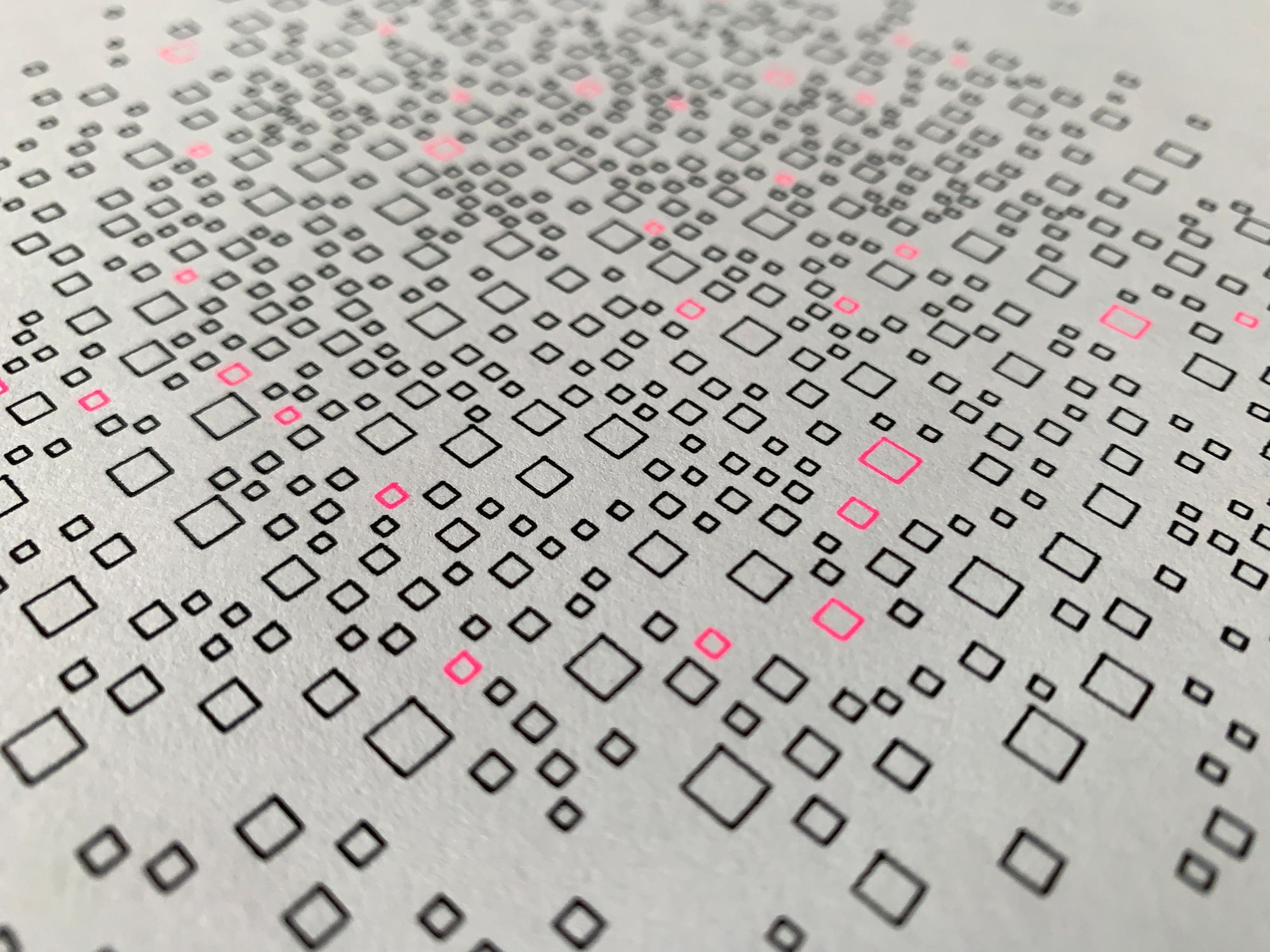Tenday Notes 30 July - 8 August

Every ten days I share a quick digest of what I've been working on. Here's the latest. You can find more in the series here.
I'm heading into an intense stretch of work before I take a week off on holiday. That means this will either be a very short or a very long tenday notes, depending on my need for procrastination.
I have three large projects on my plate right now. The first is a bunch of work I'm doing for Nesta, helping them tell stories about some of their projects. They do a huge range of things, and it's my job to sum up all of it. I don't know quite how I'll get this done, and I won't know until I somehow do, and then afterwards I won't be sure how I did it. File under: intimidating.
The second is my Brexit sonification for Loud Numbers - both the sonification itself and a script for the episode that'll accompany it. This one, unlike the others, doesn't have a firm deadline. Instead, I need to just keep pushing it along so it gets done and we can actually release the podcast one day. File under: I don't need to do this but actually I do.
Then the last is putting together my generative art pieces for my exhibition at the end of the month. This is super-fun to do, and so I deprioritise it because I always feel like I should be doing something that's more "work-like" instead. But it's no less important to my longer-term goals than the other projects so I need to make sure I put in enough time to make it something I'm proud of. File under: the fun things are the hardest to make time for.
Oh, and then there's a surprise fourth project which may pop up in the next week or so or may not, and could come in various different sizes. File that one under: who knows? [Edit: it's happening! But I can't talk about it yet.]
That'll be August, and then in September I want to rework my website. This is something everyone who has a website wants to do at all times, but it's been in place for a couple of years and I think I've grown out of the structure of the old site. I would like something simpler that more directly advertises my services, rather than a detailed collection of stuff I've done. My blog plays that latter role now.
I've been looking for a good static site generator, and my friend Will recommended Eleventy - which he says is the latest hotness. It seems to be beginner-friendly, fast, and extensible, which ticks all of my boxes. I don't plan to use it as a full content management system (I have Ghost for that), but in terms of putting together a site it looks ideal - so I'll take a bit of time at the start of September to actually learn it properly (Will recommended this course) and put it into action.
I also need to set some time aside to actually understand Node.js, which I've been putting off for literally years at this point. Maybe that'll be a September job too.
A few years back, I nearly made something pretty cool with a friend of mine. It was an app that offered routefinding by curiosity rather than efficiency. Essentially, you'd tell it where you wanted to go and how long you had to get there, and it would give you a custom route that passed a selection of interesting local things, getting to your destination on time while delivering a bunch of cool things to see on the way.
I did a lot of concepting, but it never quite reached the development phase. It would have been quite a lot of work building up and curating the database, and I didn't really have access to anyone with the technical chops to build it and the time and inclination to do so for zero budget. I set it aside, and hoped that some day someone else might overcome those barriers.
Well, someone now has! Sproute is a routefinding app that offers a bunch of different ways to get from A to B, and one of them is my routefinding-by-local-landmarks idea. Others include avoiding dark streets, and including random variations. Right now it only supports Germany, Denmark and the UK so I can't try it out. It's also iOS-only. But I'd love to hear how well it works if any of you fancy trying it out.
Some people love to bask in the summer sun. I am not one of those people. A hot summer's day makes me sluggish and lethargic, starved of energy. I just want to go to sleep. Instead, my most creative season is the winter and I particularly love the dark, cold Swedish winters - with only a few hours of daylight each day.
I learned this week that there is actually a word for this. While many animals hibernate , a latin word meaning "to pass the winter", others estivate, meaning "to spend the summer". Certain species of butterfly migrate above the treeline and assemble on mountaintops where they conserve their energy until things cool down again, which sounds honestly quite delightful. Similarly, some snails cope with dry summers by burrowing into mud and sealing up their shell with mucus until conditions improve.
A very tempting strategy. Are you a hibernator or an estivator?
If you can get past the insane paragraphing, I really recommend reading the BBC's fascinating article on the unexpected consequences of cheap renewable energy. It turns out that solar power has more than doubled the production of opium (the raw ingredient of heroin) in Afghanistan by allowing farmers to cheaply pump groundwater and irrigate arid areas. Justin Rowlatt writes:
Don't imagine this is some kind of benign "green" technology. Solar is getting so cheap that it is capable of changing the way we do things in fundamental ways and with consequences that can affect the entire world. What the changes in Afghan opium production show us is that having a source of power independent of any electricity grid - or fossil fuel supplies - can bring significant innovation. It also proves the consequences won't always be positive.
As a result of this widespread irrigation, groundwater levels in Helmand province are now falling at a rate of three metres a year. The boom in production may end suddenly as the water runs out, forcing more than 1.5 million people to migrate (more on migration and climate change here). Meanwhile, in the West, a huge heroin glut in the wake of a deep post-Covid recession with prolonged mass unemployment could spell major trouble ahead.
Either way, it's a timely reminder that even a technology as widely beloved as renewable energy can have unintended impacts.
Newsletter reader Alex Giesser got in touch following my last message with a request. He's looking for people with writing, marketing or audio editing skills to help make a podcast called News Clues: Stories. Here's the pitch:
What if I told you that there's a second Mona Lisa? That deep in the South of France there's a bust of Mary Magdalene that looks like it's ready to go to space? Or that since 1993 people are on a treasure hunt for a golden owl? I'm Alex Giesser and News Clues is coming back with News Clues: Stories, in which I'll be looking at the curious side of life.
If that sounds like something you'd like to help out with then drop him a line at newscluespod@gmail.com.
Oh, and if you've got a passion project, open-source initiative, volunteer opportunity or other non-commercial thing going on that you think my newsletter audience might find interesting, then I'd love to help you spread the word. Feel free to shoot me a note any time.
I had a bit of a mad idea the other day, inspired by A Pattern Language. My apartment is laid out with a large kitchen/living room area, and two bedrooms - one of which I use as an office. After a heavy dinner, it's often too easy to migrate to the sofa and then stay there the rest of the evening. I wondered: what if we swapped the office and the living room? Not only would that mean enough space to turn the office into more of a workshop, with space for the plotter, my partner Silfa's sewing machine and more. But it would also mean that it would be more likely that I would tinker away on personal projects in the evening rather than just sinking into the sofa.
Silfa liked the idea, and we hatched a plan to swap the two rooms, but after much thought and discussion we eventually bailed on it for two reasons. Firstly, we couldn't come up with a way to fit two desks into the living room space without having them facing bright windows (making it difficult to see the screen). Secondly, I was worried that the spatial encouragement to work in the evenings would worsen my already-harmful productivity obsession, leading to rapid burnout.
Instead, we settled on re-arranging the study to accomodate a new area for the plotter (which had previously been living on Silfa's desk), and improve our storage. I'm quite happy with the results. It should also make it easier for us to shoot video of plotter experiments for our Plottervision YouTube channel, which is coming along nicely, and give us a lot more wall space to hang up a big bulletin board on which to pin beautiful things.
Will Chase has published a wonderful data visualization of retired Atlantic hurricane names.
🚨 New Project! With 2020 predicted to be a big hurricane season, now would be a great time to see my graphic feature in the August issue of @sciam, which shows the history and devastation of "retired" Atlantic hurricanes, the worst storms in our history 🌀🌀🌀 pic.twitter.com/3cTsUMeUa1
— Will Chase (@W_R_Chase) August 3, 2020
It reminded me of a piece I wrote a few years back for How We Get To Next (RIP). Why We Name The Weather runs through the long history of storm-naming, with detours into feminist activism, precipitation cannons and a man with "flaming red hair and the adjectival luxuriance of a bullocky".

Here's a chunk:
Bolton also complained about the term “hurricane,” which she argued sounded too much like “her-icane.” She began using the term “him-icane” shortly afterwards. In a second letter, in 1972, she repeated her demands, adding that storms should be named after U.S. Senators, because they “delight in having streets, bridges, buildings” named after them.
It's published under a Creative Commons license so maybe I'll move it onto my blog one day. Until then, you can read it on Medium - and you won't need a subscription either. Enjoy!
Finally, I'll leave you this week with some great, brief side project advice from Tom Macwright.
My usual advice for finishing side projects includes some variation on “be relentless about simplicity,” which translates into avoiding feature creep. The inverse is more instructive, though: know what the cool part is. Side projects need one. If the core idea isn’t cool, you won’t be able to make the project cool by adding more stuff.
I'm planning on taking as much of the next 10 days off as I can, so look out for the next set of tenday notes in 20 days time. See you then!



